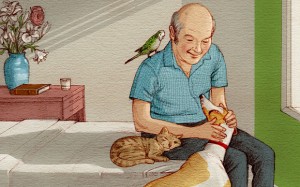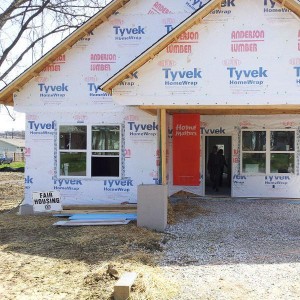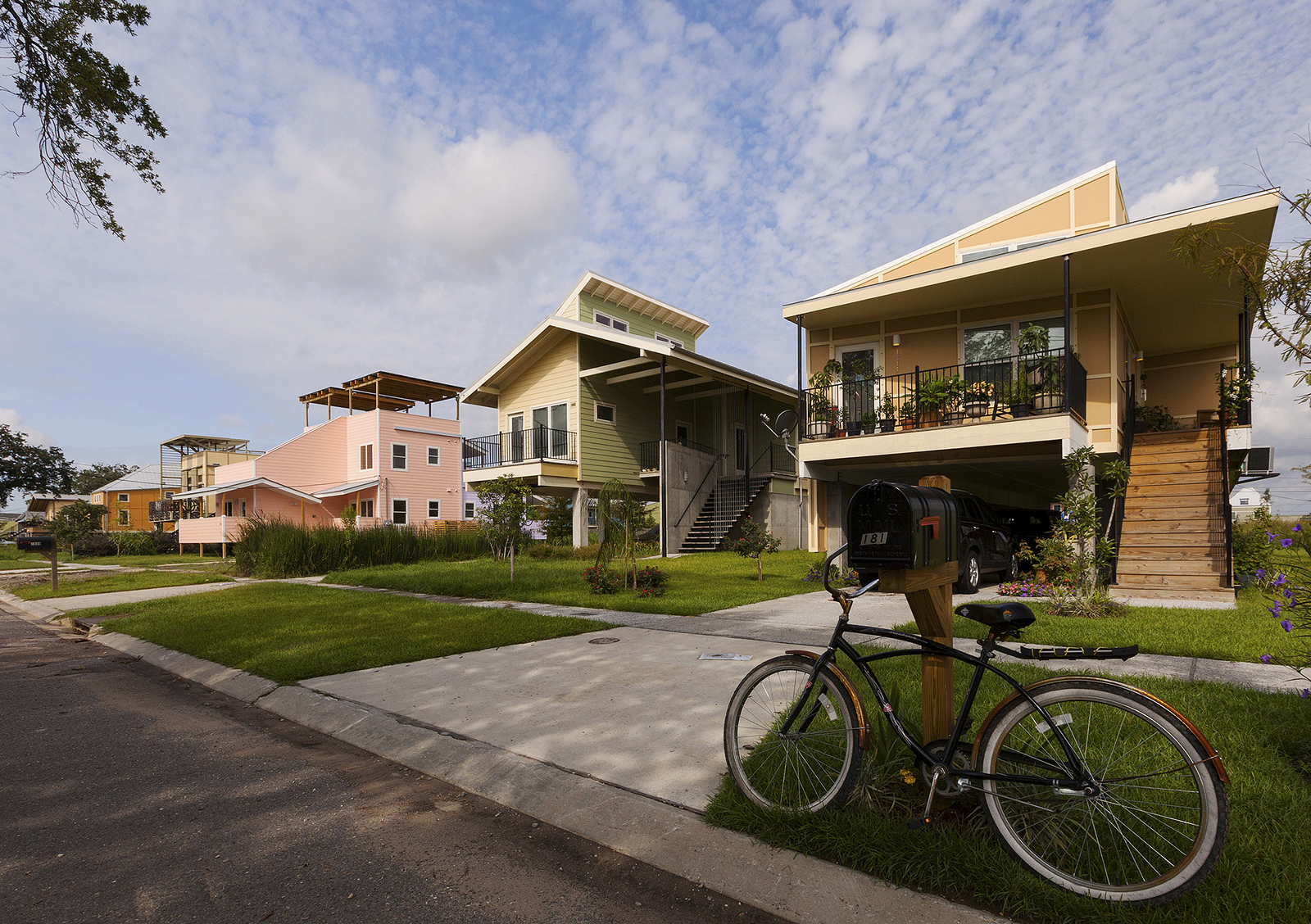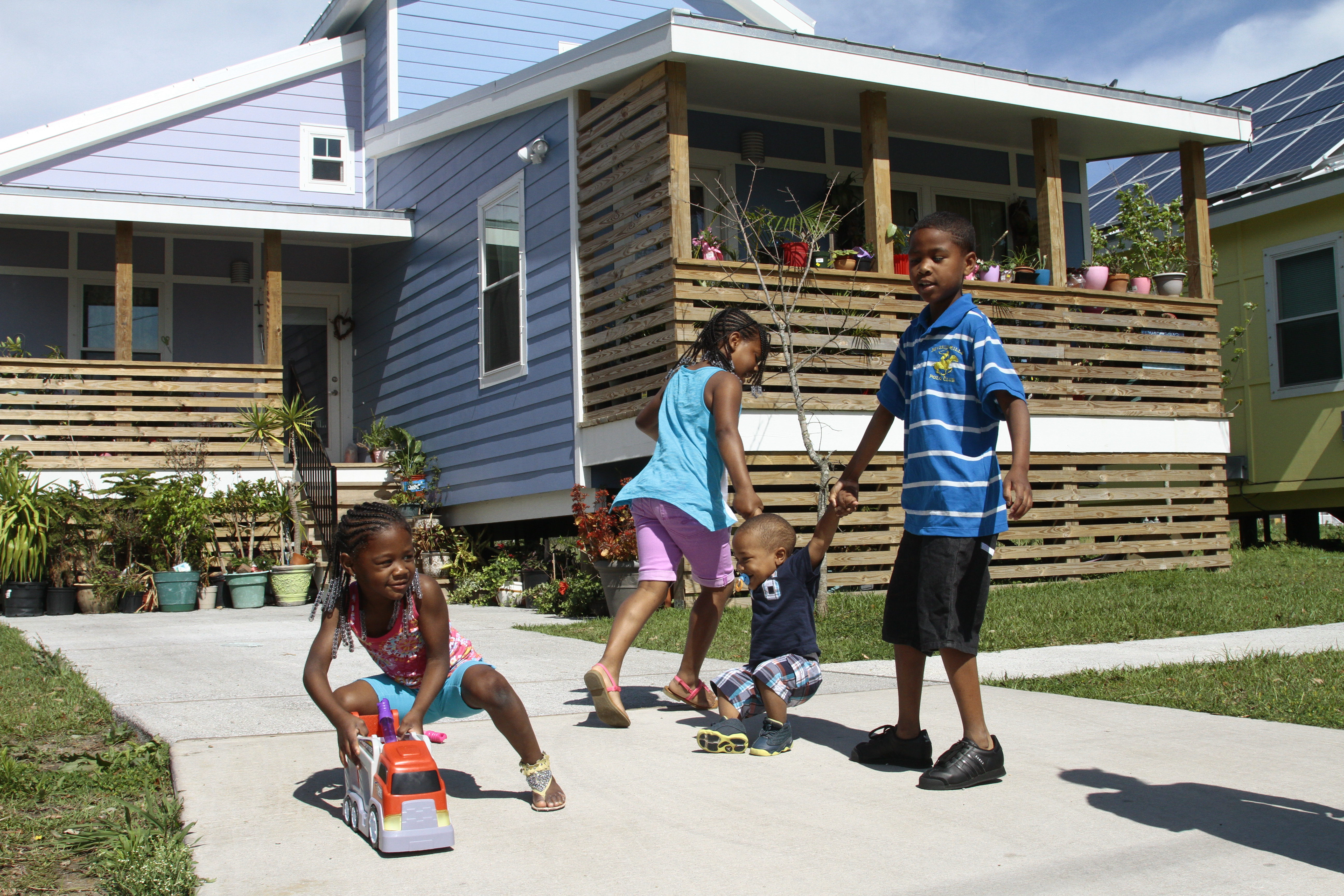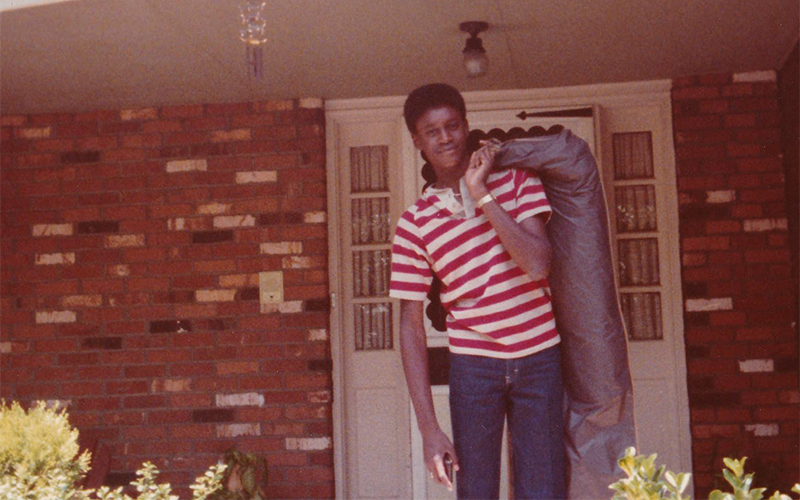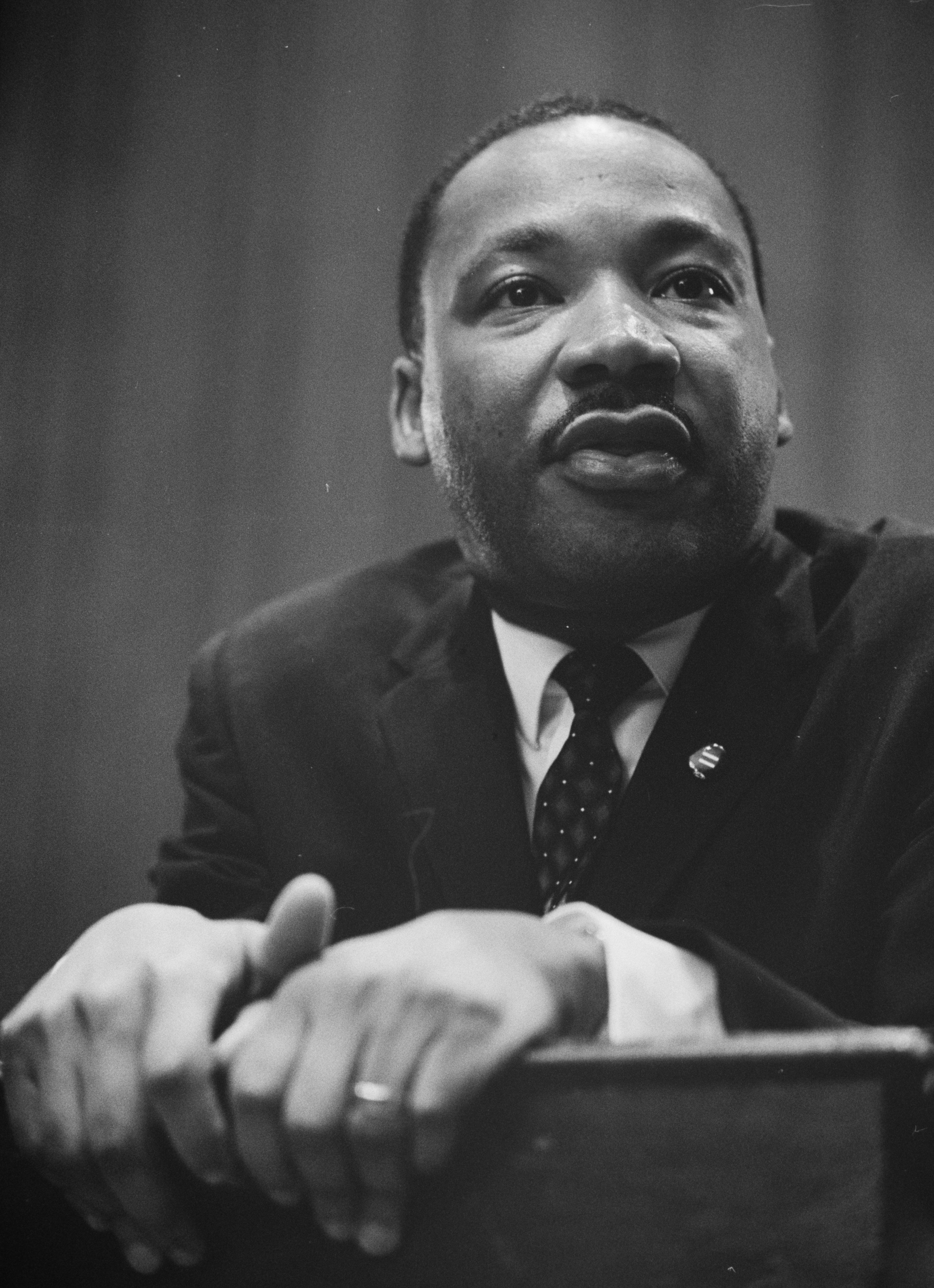Home Matters’ inaugural Advisory Council meeting underway at United Way Valley of the Sun! Great minds discussing this bold movement #HomeMatters
Monthly Archives: September 2015
Instagram picture
Our residents are the heart of @mercyhousing! Through the Health and Wellness services we provide, residents are given the tools they need to take charge of their health.
#worldheartday #health #wellness #heart #affordablehousing #community #nonprofit #giveback #support #homeishope
The Challenge of a
New Century: Keeping
Housing a Home as We Age
Our homes watch over us as we age. They see everything from birth to death and in between—a child’s first steps, a beloved pet’s last breaths, from marriage to divorce, adolescence to infirmity—and through it all, they change as we change. From the decorations on the wall to the etchings on the floor, they are the unwritten diary of our lives.
Or, at least, they used to be. Today, many Americans at the end of their lives find themselves not in the homes they love, but rather in institutions they dread—assisted-living facilities, nursing homes, hospitals—and we have accepted this outcome as a fair accomplishment. We are unwitting captives in a prison of our own design.
In part, this is a result of our own success. Modern medicine has made spectacular gains. Today, the average life expectancy is nearly 80, more than double the life expectancy for most of human history. This extended lease brings new demands on the society that sustains us. And the housing sector has not kept pace.
Older homeowners typically live on fixed incomes. As a result, they spend less on maintenance and often have less access to credit. Without upkeep, their housing will deteriorate as they age. This is both dangerous and demoralizing.When these homes lose value, their owners lose wealth. On a fixed income, wealth matters. According to one recent study, when the elderly lose housing wealth, their health worsens and their likelihood of disability increases. In fact, for older populations, housing assets account for more than 90 percent of socioeconomic inequality and over half of disability inequality.
Further, with aging comes a decline in mobility. It’s harder to walk, drive, and navigate the environment. Most homes and neighborhoods aren’t equipped for this stage of life. They lack ramps, wide doorways, and bathroom grab bars. Public transit is inaccessible and inhospitable. Healthy food stores and affordable medical centers are too far away. Sidewalks are uneven and poorly lit, if they exist at all.
Faced with these obstacles, many older Americans have to choose between sedentary isolation and premature institutionalization—both of which are associated with worse health outcomes. The longer a person stays in their own home and the more space they occupy, the longer they tend to live and the less they tend to experience stress, anxiety, and depression.
In the research for his recent book Being Mortal, Atul Gawande was shocked to discover how simple changes could make such a big difference. His surgeon training told him to focus on expensive tests and medications—in short, how to stop aging—but palliative care specialists took a different approach. They prescribed better shoes to prevent falling. (Hundreds of thousands of Americans fall and break a hip every year. Almost half of them wind up in a nursing home. A fifth will never walk again.) They tried to eliminate medications that reduced the patient’s quality of life. They altered diets and routines. In short, they aimed to manage aging.
We can learn a lot from these experts. They have spent their lives thinking about an inevitability that most of us would rather ignore until it’s upon us. But by then it’s too late. And for those among us who are already facing this final hurdle—a group that will only continue to expand as the Baby Boomers retire—it is incumbent on a humane society to give them all the help and support we can. After all, we would not be here without them.
Midway through the book, Gawande tells the story of Bill Thomas, a young physician who had the radical idea to fill his nursing home with dogs and cats and birds and plants, completely outside the box that his profession had created for end-of-life care. When he ordered hundreds of parakeets, they thought he was crazy. It was a recipe for chaos.
What happened next was remarkable. “People who we had believed weren’t able to speak started speaking,” he recalls. “People who had been completely withdrawn and nonambulatory started coming to the nurses’ station and saying, ‘I’ll take the dog for a walk.’” One by one, the residents adopted the pets, and it gave them a renewed sense of purpose. They laughed and played and cared for their new animal friends.
They felt alive again.
Bill Thomas put the home in nursing home. He understood what Home Matters is all about: Our housing may change, but it should always remain a home, a place where people feel warm, safe, and valued until their very last day.
“Prolonging life is one of the great accomplishments of the modern era. Our housing needs to adapt to better serve prolonged lives.”TWEET THIS
Prolonging life is one of the great accomplishments of the modern era. We need to make sure that our housing adapts to better serve prolonged lives.
If we started designing homes with an age-in-place sensibility that allows for both aesthetics and adaptability, we would get to raise our children, become empty nesters, perhaps become widowers and mobility-challenged, yet still stay rooted to our precious memories, aging with grace, in our own home. All the energy and investment we put into adding years to our lives is only worth it if we marshal the same effort to make those years enjoyable and fulfilling. The difference between surviving and thriving is the difference between shelter and home. For it’s only when we’re truly home that we feel that treasured presence, watching over us, sharing our journey, for as long as it’s able.
Tweet: Home is where new opportunities begin #ShareHomeIs…
Status
Instagram picture
Today is the anniversary of the opening of the first “House of Mercy,” which opened its doors in 1827 in Dublin, Ireland by Catherine McAuley. Today, 188 years later, @mercyhousing continues her legacy in order to build a world in which all people can reach their full potential.
#mercyday #history #affordablehousing #community #nonprofit #giveback #support #homeishope
Tweet: Home is being a part of an organization that aims…
Status
Home is being a part of an organization that aims to #ReDefine the American Dream… #ShareHomeIs (Full post on Fb) http://t.co/OtYtMGPDqa

Instagram picture
Fall is in the air! #happyfirstdayoffall
#newseason #autumn #fall #sweaterweather #nonprofit #affordablehousing #community #support #givenack
Instagram picture
Last weeks Live in Hope event, hosted by @mercyhousing Colorado, raised more than $64,000! Guests also got to hear from Denae, a single mother and Mercy Housing resident. (Pictured: Mercy Housing CEO, Jane Graf, & Mercy Housing Resident, Denae)
#HomeIsHope #affordablehousing #community #giveback #nonprofit #support #fundraiser
Instagram picture
Home to me is anywhere that’s warm and there’s no snow. But especially at the farm in the summer! #ShareHomeIs #BeTennessee
Instagram picture
Home is where I feel accepted and at peace. #parkingdaycha #parkingday2015 #sharehomeis #greenspace
Instagram picture
@mercyhousing Colorado hosted their 8th Annual Live In Hope Breakfast yesterday at the @fsdenver where they awarded Colorado Housing and Finance Authority (CHFA) with the Live In Hope Award! #congratulations #LiveInHope #award #HomeIsHope #affordablehousing #community #giveback #nonprofit #support
Instagram picture
Our favorite: where I feel accepted and at peace. ❤️ #sharehomeis #parkingdaycha
Instagram picture
#sharehomeis #parkingdaycha
Katrina 10 Years Later: Building Back Better
Ten years ago Hurricane Katrina devastated the city of New Orleans. Brad Pitt launched Make It Right over two years later in 2007 to help rebuild the Lower Ninth Ward, arguably the neighborhood hardest hit by the storm. Despite the disproportionate level of devastation, displaced Lower Ninth Ward residents were determined to come home and rebuild. As someone who loves the city and especially its people and culture, Brad vowed to help them rebuild more sustainably than before. Inspired by architect Bill McDonough and the book he co-authored, Cradle to Cradle, Brad set the bar high – these new homes had to be resilient, beautiful, healthy and safe for people and the environment…and affordable. Too many view those requirements as mutually exclusive, but for Brad, it was the just the starting point, not the finish line. Brad sees this as a social justice issue; he believes that everyone has the right to live in safe, healthy, high-quality housing, and he saw this effort as nothing less than the opportunity to change the way affordable housing is built. Perhaps most importantly, he realized these aspirational goals could only be accomplished in partnership with the community. Post-Katrina, many planning efforts fell by the wayside as local needs were minimized or ignored. So Brad decided to start there.
I was building houses in North Carolina when I first heard about Brad’s vision from Bill McDonough. I offered to volunteer for a few weeks to help develop a plan. That was nearly nine years ago, but a year of that time was spent working in the Lower Ninth with homeowners and community leaders, learning about their neighborhood, the risks it faces and the opportunities to build back better.
Brad is passionate about design, and realized that any good new design should be grounded in the cultural and environmental context of the Lower Ninth Ward community. At the same time, he saw a unique chance to tap volunteer architects from all over the world, guided by local vernacular, to bring a new perspective on sustainable and resilient design through a series of community-led design charrettes. We originally invited thirteen architecture firms to lend their time and expertise, hoping a few would agree. They all said yes and we ended up with an amazing assortment of both local, national and international firms. Since then, we have expanded our design portfolio in New Orleans to include the work of over twenty-five volunteer firms.
This was not a competition; the only designs to be built would be chosen (and purchased) by a displaced Lower Ninth Ward family seeking to come home. Our team of NeighborWorks-trained homeownership counselors works with each of these families to develop an affordable loan tailored for their needs. Brad insisted this program be a hand up, not a hand out, even though it would have been faster and easier to simply give houses away.
Early on, we chose LEED for Homes as a way to codify what it meant to “build green,” and we set our sights on Platinum, as our minimum. Since we started building in 2008, Make It Right has finished 109 LEED Platinum homes for former Lower Ninth Ward residents, teachers, and first responders. We started by designing and building the best houses possible, then working our way towards affordability. We’ve learned many lessons along the way, and we seek to share those lessons with other communities in need. You can learn more about our lessons-learned and our design approach at makeitright.org. Now, we’ve expanded our work to underserved communities in Newark, NJ, Kansas City, MO and the Native American Reservation at Fort Peck, MT. Our community-led design approach has guided each of these efforts, and that is the most important design lesson we learned from Katrina.
When I heard about Home Matters and their mission to improve peoples’ lives by changing the definition of home, it reminded me a lot of where Make It Right started and the core beliefs that we hold today. So I was eager to participate in Home Matters’ first-ever Design Challenge to set an example for how affordable homes and better communities should be built.
“The Home Matters approach is inherently aspirational…by demonstrating how all housing & communities should be designed.”TWEET THIS
Home Matters recognizes that we must all work together to get there. Someone needs to set the bar high for the future of affordable housing. Someone must go first. I hope that both Home Matters and Make It Right can continue to push the envelope, because we believe that achieving higher quality, healthier, more sustainable, affordable homes and communities should be a never ending goal.
Instagram picture
Congrats again to the three winners of our #RedefineHome Design Challenge!
Instagram picture
@Autodesk Gallery provides such a fun space for us to celebrate the winners of our #ReDefineHome Design Challenge. Stay tuned for the announcement of our winners!
Instagram picture
Getting ready for our #ReDefineHome Design Challenge awards reception at the @Autodesk Gallery
Instagram picture
“Set your goals high, and don’t stop until you get there.” Bo Jackson
#HomeIsHope #affordablehousing #youth #children #giveback #nonprofit #support #community #selfimprovementmonth #september #goals
Instagram picture
Today, we remember those 2977 lives lost 14 years ago. #neverforget #alwaysremember #september11
Instagram picture
Congratulations Mercy Loan Fund for being recognized by the Federal Home Loan Bank of Topeka, who celebrated the 25th year of the Affordable Housing Program! #affordablehousing #award #nonprofit #community #giveback #AHP #congratulations #support
Tweet: @elonuniversity set up a living room in the park t…
Status
@elonuniversity set up a living room in the park to get people to tell us what home means to them ow.ly/RTjw7 #ShareHomeIs
Instagram picture
Thank you to Interstate for hosting a charity golf tournament to support @mercyhousing! We are so appreciative of your continued support! #HomeIsHope #golf #golftournament #charitygolftournament #support #community #giveback #thankyou #nonprofit #followus
Why Home Matters: Welcome to the Conversation
How do you talk about home without thinking of the American dream?
It was Thomas Jefferson who first solidified the vision of homeownership as the foundation of American democracy. He saw it as the antidote to European aristocracy, which perpetuated itself by keeping land in the hands of the nobility. Jefferson’s radical proposal would have given 50 acres of land to every free person in his home state of Virginia.
This particular dream was never realized. Its spirit lived on, however, inspiring subsequent generations as they carved up and settled the frontier. It probably helped that the majority of the frontier, the Louisiana Purchase, was acquired by one President Thomas Jefferson. So the man who dreamt of a nation of homeowners supplied the land to make it affordable.
These days, since the collapse of the housing bubble, it may seem that the American dream is as dead as Jefferson himself. Homeownership has come under attack as a dangerous policy goal that siphons money from worthier investments and distorts the market.
But this is a gross generalization that overlooks several important facts.
For one thing, the homeownership rate peaked in 2004, just as the bubble was getting started. For another, a large body of research has now proven beyond a shadow of doubt that affordable housing policies focused on making sure there was equal access to credit did not cause the crazy run-up in prices. But most importantly, the reasons that home matters are as true today as they were in 1776.
The founding fathers were right. Where a person lives affects how they live. Homeowners are more likely to vote, to participate in their communities, and to lead satisfying lives. Owning an affordable home makes them healthier, wealthier, and smarter. Its benefits spillover into their surroundings and multiply down through the generations.
“The founding fathers were right. Where a person lives affects how they live.”TWEET THIS
But homeownership isn’t for everyone. It’s a life choice, and not always the best one. Home matters for everyone, whether they own or rent. The real American dream ought to be a stable, affordable home for every kind of household. That is the vision of this blog – to start to re-define the American Dream in America.
You have come here because you care about home. You are not alone. I care about home too.
I suppose I’ve always cared about home—I had the good fortune to grow up in a nurturing middle-class home in southern New Jersey—but it wasn’t until I was at Stanford and working for a community-based organization in East Palo Alto that I started believing that individual actions could help the many Americans that didn’t have access to the stability and affordability that my family had enjoyed.
At Stanford, at the Federal Reserve, and later as Assistant Secretary at the Department of Housing and Urban Development, I investigated and combated the constraints standing in the way of the American dream for all and met many other researchers and policymakers pursuing the same goal. This blog will explore our findings, and highlight things we all can do in taking on this great challenge.
Home Matters® is a new and exciting ally in this fight. I am partnering with them in producing this blog because they believe what I believe: home is more than housing and shelter. It’s about the environment that affects the choices we make in life and who we become. It is the foundation for our our health, our education, our individual success, our public safety and our economy.
These elements are the building blocks of our society. As our nation changes, so too will the demands they place on our homes. An aging population, to give one example, requires homes equipped to ease health burdens. Stay tuned for more on this issue in my next blog post. You will quickly find that there is no shortage of ways that home matters.
And that is why we must talk about it. As the Reverend Martin Luther King Jr. once said,
“Our lives begin to end the day we become silent about things that matter.”
For too long, we have been silent about the costs and benefits of pursuing the New American dream and the millions of households it eludes. It is time to speak.
Instagram picture
This year @mercyhousing lakefront and Holy Family Scool are partnering to send 25 youth and 3 preschoolers to private school! First day of school and these kids look incredible! #BackToSchool #school #preschool #chicago #uniforms #opportunity #community #kids #giveback #schooluniforms #nonprofit #followus

